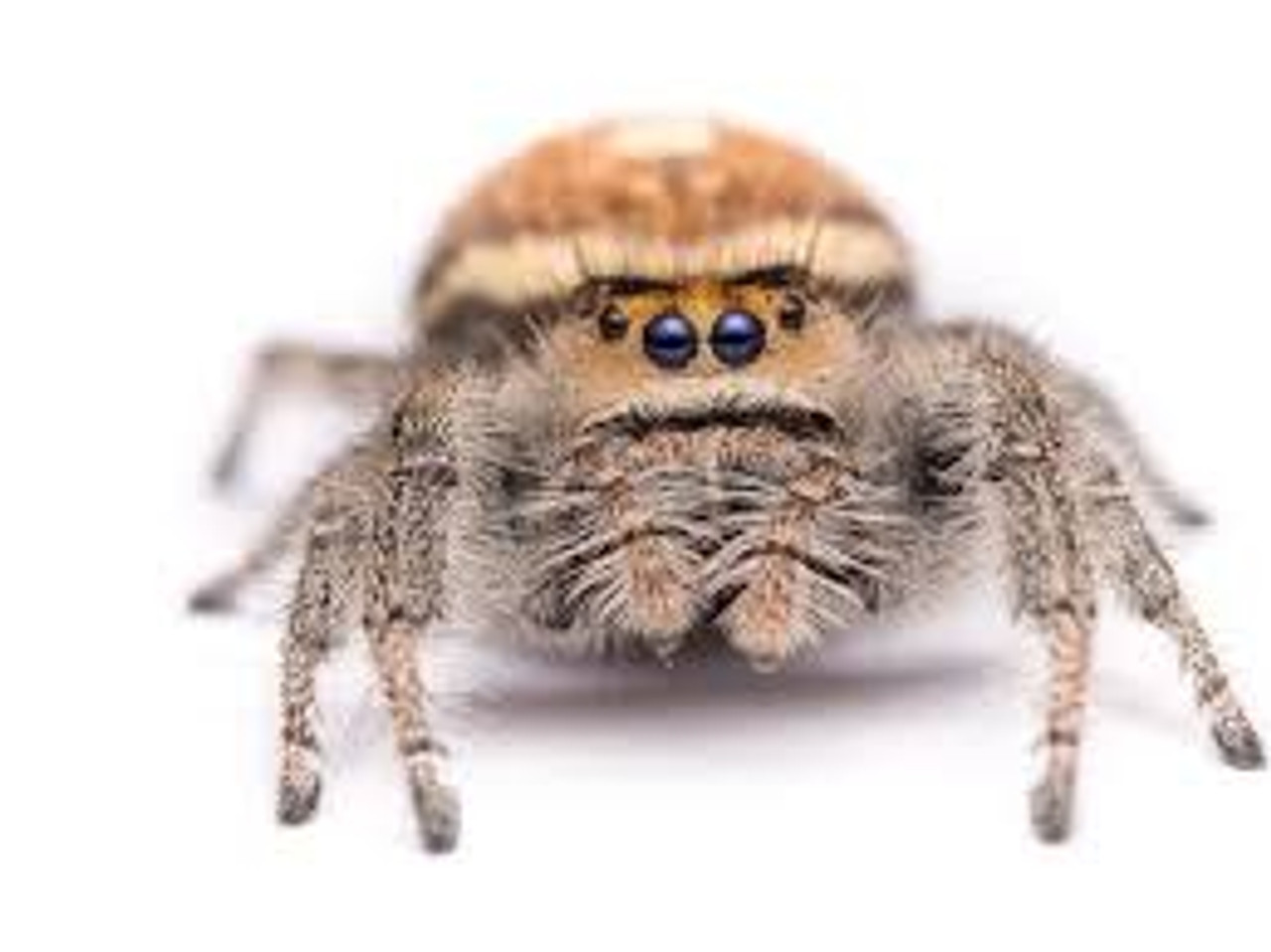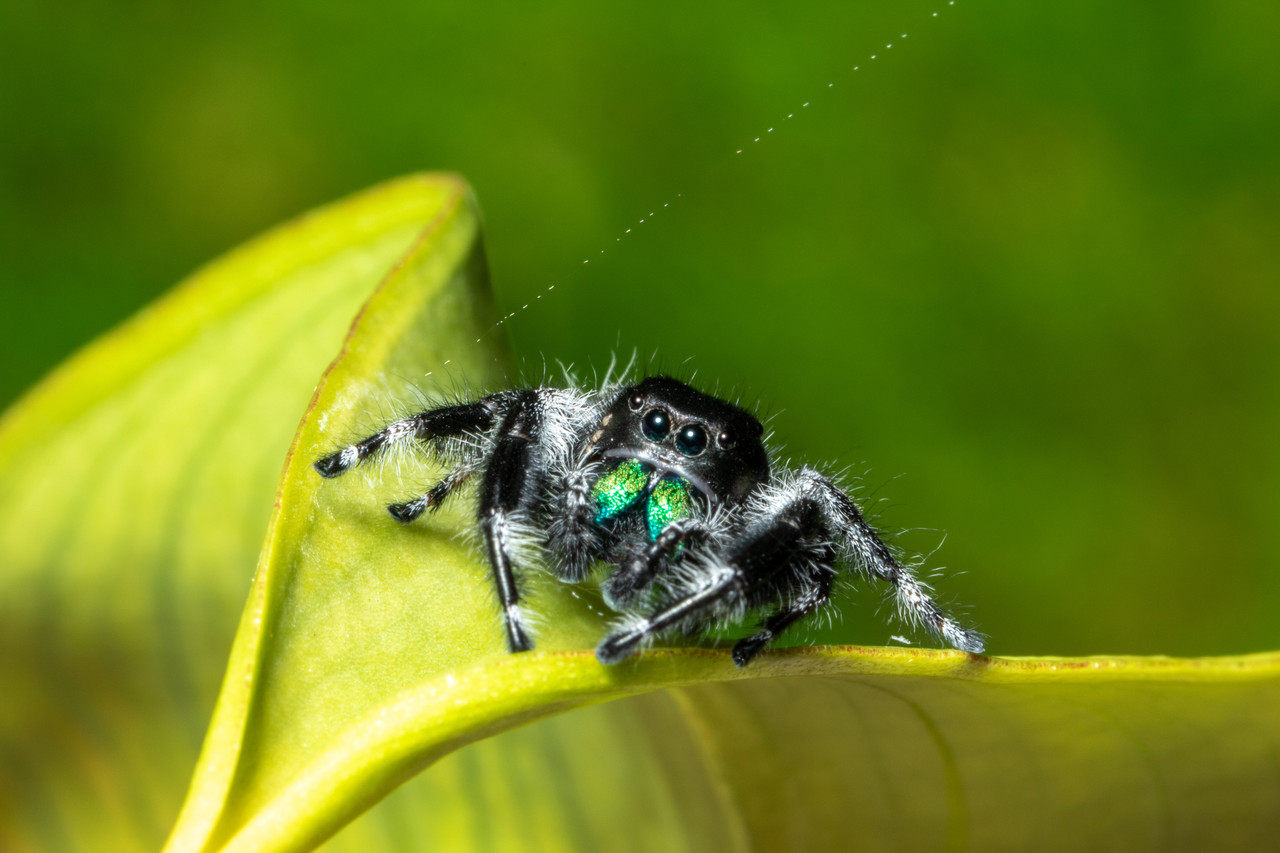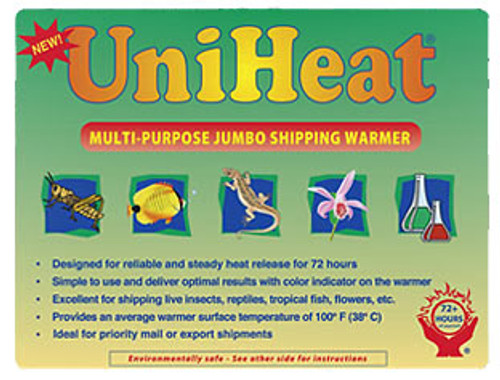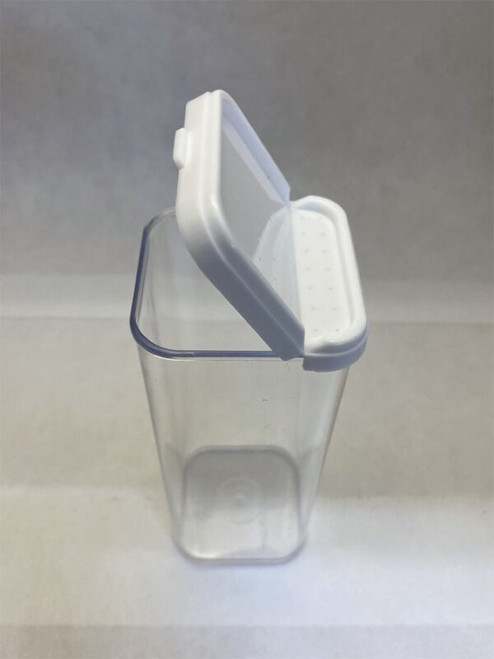Product Description
Phidippus spp.
WARNING: THESE ARE NOT FOOD FOR PEOPLE OR ANIMALS
We do not ship spiders to Alaska, Hawaii, or Puerto Rico
For live delivery guarantee: if your temps are below 55 or above 85° the "Hold for Pickup" button must be checked above!
Also known as Regal Jumping Spiders, these cuties are native to the eastern part of North America.
Care and Feeding:
Food and Water: Provide water and humidity by misting one or two sides of the enclosure 3 - 5 times weekly. Offer food 1 to 2 times longer than the length of your spider. Feed your young spider 2-3 times weekly; 1 - 2 times weekly for adults. Your spider's abdomen is a visual indicator, when it's small your spider is hungry, when it's full they are too!
Feeders we have that customers purchase for Jumping Spiders include:
- Small spiderlings: Springtails, Melanogaster Fruit Flies, Pinhead crickets
- 3rd to 5th instar: Hydei Fruit Flies, Extra Small Phoenix Worms (Special Order), Rice Flour Beetle Larvae
- 5th to 7th instar: Mini to Small Mealworms, Hydei Fruit Flies, Small Phoenix Worms
- 7th instar to adult (what we sell): Small Dubia, Medium to Large Mealworms, Spikes (to either hatch into flies or use the pupa), Waxworms (will be too big and fatty for all but the largest spiders, they can also be allowed to turn into a moth), Medium Phoenix Worms
You can also chop a mealworm into 5 or 6 pieces, they will love sucking out the gooey middle!
Molting: Be very careful not to disturb your spider or feed it when it is molting, they are extremely fragile. They will stop eating and build a thick web sac (called a hammock).
Do not feed your spider during this time, but you can continue to mist to maintain humidity.
The molt can take a few hours to a few days to complete. They will act less active than usual afterwards until the new exoskelton hardens. Once they become more active you can start by offering fresh mealworms cut into 5 or 6 pieces so they can suck out the middle. Their mouthparts will be soft for the first day or so.
Housing: Jumping Spiders are 'arboreal' meaning they are tree-dwelling and can be found living in bushes, trees, and in-between the blades of tall-leaved plants. A growing spider can be housed in a 4x4x6 enclosure, but an adult will need a larger 6x6x10 size. The key is make sure your spider can climb.
Ventilation is key for your spider's health, with holes to prevent your spider (or food) from escaping while letting fresh air circulate. Humidity should be around 75% normally and 85 to 90% during molting. Keeping live moss helps keep humidity high.
Any door should be on the side since your spider will likely make its hammock at the top.
Place your spider in a brightly lit location, they love light when hunting! An LED lamp with a 12 hour timer for daytime lighting will also work well. Keep your enclosure around 74°F
Coco coir with some sand added in works well for a substrate at the bottom. We add in mealworm castings to ours for natural plant health and some springtails for biologic cleanliness.
Sadly, Jumping Spiders are solitary and must be housed alone. When housed together, one will often eat the other one after a brutal fight. This is true even when mating them; your female will want to eat her mate and likely start before he has finished his manly duty.







